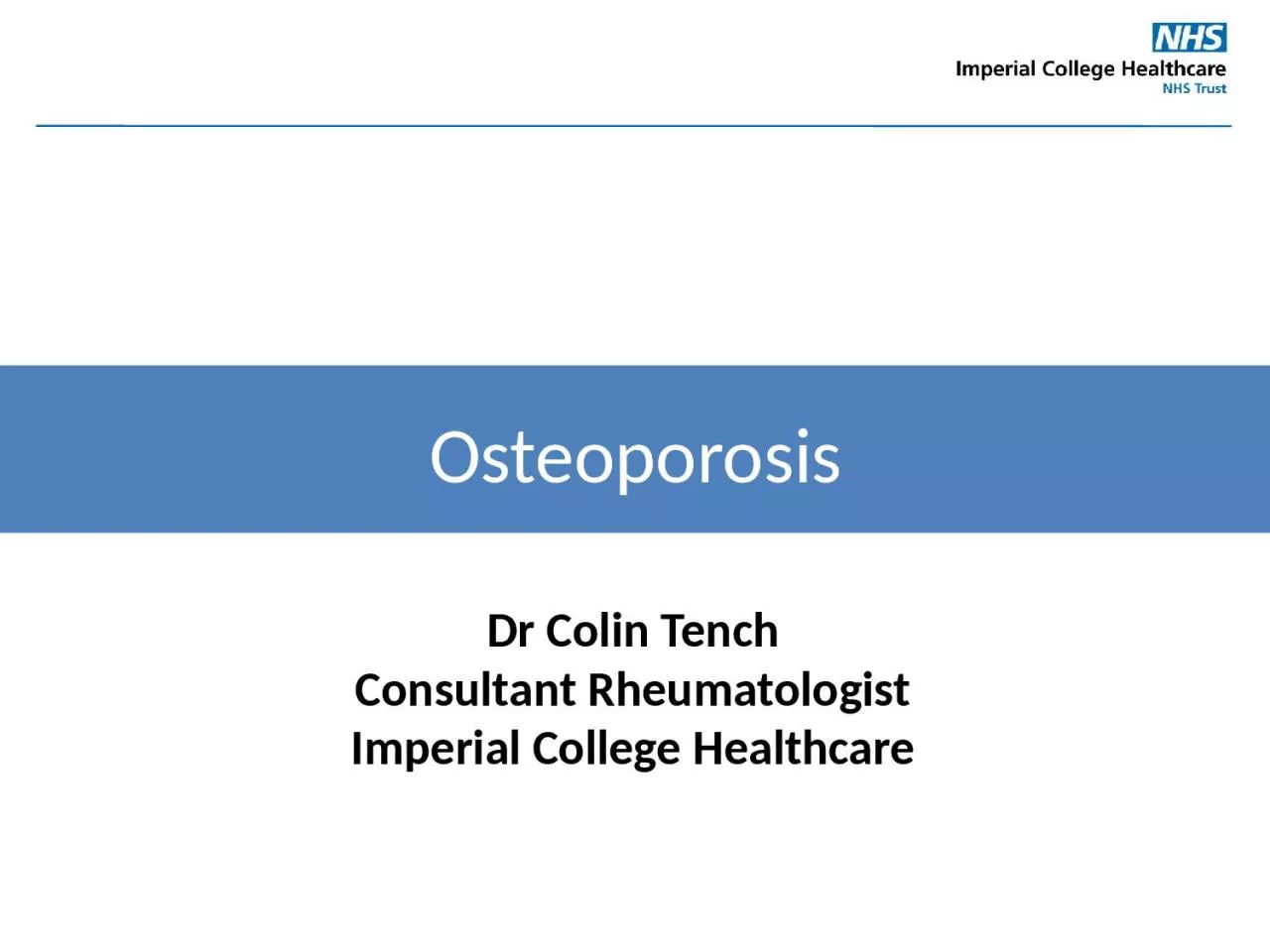PPT-Dr Colin Tench Consultant Rheumatologist
Author : daniella | Published Date : 2023-07-08
Imperial College Healthcare Osteoporosis Objectives What is it How common is it NICE guidance Who to assess How to assess Who to treat How to treat Osteoporosis
Presentation Embed Code
Download Presentation
Download Presentation The PPT/PDF document "Dr Colin Tench Consultant Rheumatologis..." is the property of its rightful owner. Permission is granted to download and print the materials on this website for personal, non-commercial use only, and to display it on your personal computer provided you do not modify the materials and that you retain all copyright notices contained in the materials. By downloading content from our website, you accept the terms of this agreement.
Dr Colin Tench Consultant Rheumatologist: Transcript
Download Rules Of Document
"Dr Colin Tench Consultant Rheumatologist"The content belongs to its owner. You may download and print it for personal use, without modification, and keep all copyright notices. By downloading, you agree to these terms.
Related Documents














